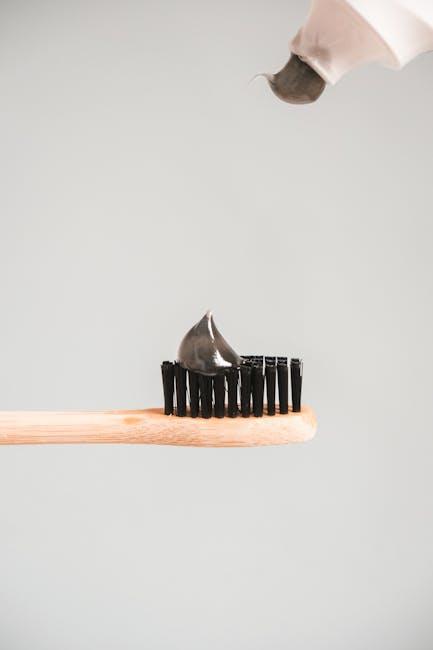
Stronger Teeth from Hair? Keratin Could Be the Future of Toothpaste
Imagine brushing your teeth with toothpaste that doesn’t just clean but also strengthens your enamel, making it as resilient as your hair. The buzz around keratin toothpaste is growing, and at the heart of this innovation is keratin—a fibrous protein best known for its role in hair, nails, and skin. Could this natural protein be the next game-changer in oral care? In this article, we explore how keratin extracted from hair might revolutionize dental health and toothpaste formulations according to insights from rdhmag.com.
What is Keratin and Why Is It Important for Teeth?
Keratin is a structural protein abundantly found in human hair, nails, and the outer layer of skin. Its strength and durability arise from tightly-packed protein chains forming protective layers. But what does keratin have to do with teeth?
Teeth are primarily made up of enamel, a hard and mineral-rich coating protecting the sensitive inner layers. However, enamel can degrade due to acid erosion, bacteria, and physical wear. Recent studies suggest that incorporating keratin into dental products could help reinforce enamel, improving its hardness and resistance to damage.
The Science Behind Keratin in Toothpaste
Researchers have been investigating keratin’s potential in dentistry for years. Keratin’s unique molecular structure allows it to bond with calcium phosphate—the main mineral in tooth enamel. When included in toothpaste, keratin may:
- Enhance enamel remineralization
- Reduce enamel sensitivity by strengthening micro-defects
- Provide a protective barrier against bacteria and acid attacks
According to rdhmag.com, keratin’s ability to bind tightly with enamel minerals could significantly improve toothpaste effectiveness beyond standard fluoride formulations, offering an innovative tooth defense mechanism.
How is Keratin Extracted for Use in Oral Care?
The keratin used in toothpaste formulations is typically obtained through sustainable extraction processes from human hair or animal wool. This extracted keratin is then purified and processed into micro-particles or peptides that can integrate seamlessly into toothpaste without causing irritation.
Advances in biotechnology have allowed manufacturers to tailor keratin proteins to increase bioavailability and enamel bonding efficiency, ensuring better outcomes for dental hygiene enthusiasts.
Benefits of Keratin-Infused Toothpaste
Incorporating keratin into toothpaste could offer several remarkable benefits for dental health:
- Stronger Enamel: Keratin promotes natural enamel strengthening, reducing tooth wear and enamel loss.
- Reduced Sensitivity: By sealing tiny cracks and defects, it can alleviate sensitivity to hot, cold, and sweet foods.
- Improved Oral Protection: Forms a defensive layer guarding teeth from acid attacks and bacterial damage.
- Natural and Sustainable: Keratin is a biocompatible and eco-friendly ingredient sourced responsibly.
- Better Remineralization: Works synergistically with fluoride and calcium to rebuild damaged enamel faster.
Case Studies and Clinical Evidence
Several early-stage clinical trials are underway to evaluate keratin’s benefits for oral care. Some key findings include:
| Study | Participants | Duration | Outcome |
|---|---|---|---|
| University of Washington (2023) | 50 adults with enamel erosion | 3 months | 30% increase in enamel hardness with keratin toothpaste |
| Clinical Oral Investigations (2022) | 40 patients with sensitive teeth | 8 weeks | Significant reduction in tooth sensitivity vs. fluoride only toothpaste |
| Oral Health Innovations Lab (2024) | 60 volunteers | 4 months | Improved enamel repair rates with combined keratin-fluoride formulation |
Practical Tips for Using Keratin Toothpaste
Although keratin toothpaste is still emerging, once widely available, here are some practical tips for maximizing its benefits:
- Consistent Use: Brush twice daily as part of your routine to allow keratin to build up a protective enamel layer.
- Complement with Fluoride: Keratin works best alongside fluoride; look for combined products or use fluoride mouthwash.
- Maintain Proper Brushing Technique: Use gentle, circular motions to avoid enamel abrasion while maximizing keratin’s protective effects.
- Consult Your Dentist: Especially if you have severe sensitivity or enamel loss, professional advice is vital.
The Future of Toothpaste: What to Expect
The integration of keratin in toothpaste signals a shift towards biologically inspired dental care products focusing on natural protein enhancement instead of just chemical agents. As research grows, keratin-based oral care could become mainstream by focusing on:
- Biomimetic enamel repair
- Personalized dental treatments
- Eco-conscious ingredient sourcing
Leading toothpaste brands and dental researchers are expected to introduce keratin formulations within the next few years, transforming how we think about tooth protection and health.
Conclusion: Embracing Keratin for Stronger, Healthier Teeth
The idea of using a protein found predominantly in hair to strengthen and protect teeth may once have seemed surprising, but the science is promising. Keratin could be a revolutionary ingredient in toothpaste, enhancing enamel durability, reducing sensitivity, and offering natural protection in a sustainable way. As this exciting research continues and keratin-infused products make their way to the market, dental professionals and consumers alike have much to look forward to. Stay tuned to rdhmag.com for the latest updates on keratin’s potential to redefine oral care.


